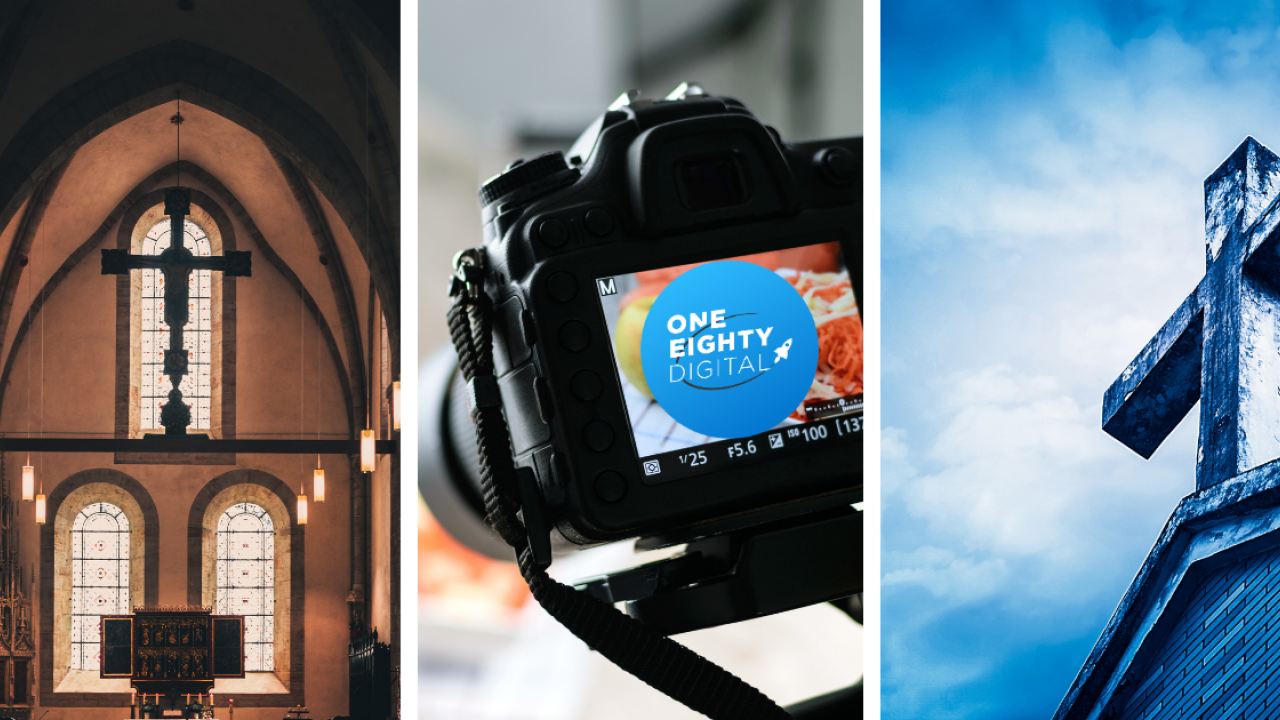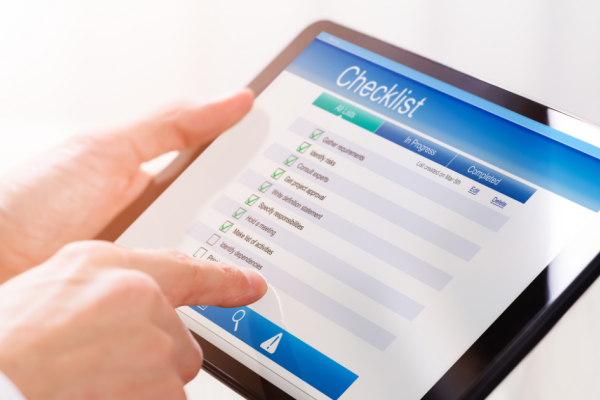

Church Websites—The 7 Dos and Don’ts of Stock Photography
Church Websites—The 7 Dos and Don’ts of Stock Photography
Let’s talk about stock photography on your church website. First, we need to look at why photos are important. In the online society we live in, our brains have become used to making judgements at lightning speed. On average, people spend more than 6 hours online. We are getting better and better at “filtering” content and making judgements about whether online content/websites are relevant to us. Our eyes are the first point of contact for most people. We quickly look and make a decision based on what we see. The biggest influence in this decision making are the images that we see when we first land on a website. The main header image is often called a hero image because of its importance in guiding users to scroll down the page. The images you use on your website will encourage or discourage people from learning more about your church.
Simply stated, the best images for your website will always be professionally taken photography that shows your church, people, services, ministries, and atmosphere. That’s why, when we can, we offer professional photography services to our clients. It creates the best end product. But you might say, I don’t have the budget, volunteers, or know-how to have good photography. If this is the case, then stock photography may be a good choice for you. So we’ve decided to share a few stock photo do’s and don’ts below.
Table of contents
1. Do: Make Sure Your Photos Have the Right License
2. Don’t: Choose Photos That Are “Personal”
3. Do: Set a Realistic Expectation of Your Church
4. Don’t: Use Images From Google
5. Do: Crop, Compress, and Resize
6. Don’t: Dismiss Candid Photography
7. Do: Choose Photos That Provide a Cohesive Look
- Do: Make Sure Your Photos Have the Right License
The goal of using stock photos is to help your church, not get it in legal trouble. While disputes like this are rare, it’s important to respect the work of others and use it appropriately. You want to look for either “Royalty-Free” images or ones that have a “Creative Commons” license that allows for free commercial use. These types of photos are free for you to use however you want. That means you can use them on postcards, flyers, banners, and your website with no worries of someone calling you and asking you to remove their photo. The best way to find these types of photos is to search a royalty-free stock photography website. We did you a solid and went ahead and compiled our favorite top 3 free stock photography websites at the bottom of this article.
- Don’t: Choose Photos That Are “Personal”
Images communicate so much more than words. We learned the importance of face-to-face communication throughout 2020. People’s faces express a lot, and making sure the stock photography you pick out communicates what you want is crucial. We usually stay away from any photos that show a person’s face because it’s hard to invoke the right emotion unless it’s real. We suggest using photos that are a little less personal but still communicate the intended message. For example, an image of people holding hands communicates unity, an image of a hand raised communicates worship, or an image of hands folded communicates prayer. Look for images that communicate indirectly through objects and not faces.
- Do: Set a Realistic Expectation of Your Church
The images on your website communicate what it would be like to attend your church. With that in mind, it’s important to use images that communicate the appropriate style, size, age, and diversity of your church. You don’t want someone showing up expecting a young church with modern worship and have them find a predominantly older congregation that sings hymns. In the commercial space, that’s called false advertising. Expressing your authentic self through images, or stock images in this case, should always be on your mind. You can express the mood of your worship services by finding pictures with the right lighting. If your sanctuary isn’t a blacked out concert hall don’t use an image like that. Similarly, if your church is in a historic building, play off of that with images that would fit that style. Set the appropriate expectations.
- Don’t: Use Images From Google
As easy and tempting as it might be to just “Google” it and find the image that you are looking for, it’s one of the easiest ways to get yourself in trouble. Images were taken by people and can often be copyrighted. While you may think it is the perfect image to use on your website, it can be a potential source of legal liability. Using a reputable site, like the ones we’ve linked below,is the best way to stay out of trouble. Plus, many of the images you find on Google contain watermarks or branding that marks them so others can’t use them. You wouldn’t want a photo you took to be on a website without your permission.
- Do: Crop, Compress, and Resize
It’s also important to find images that are high quality. Starting with a high resolution image means you can crop and resize it to fit your specific needs. So whether it’s a banner, postcard, or social media, you can put the correct size image in the correct place. Images can be large and can greatly impact your site load speed. Google has said site load speed is a key ranking factor for websites. So don’t slow down your site with images that are more than 300kb in size. Proper sizing and cropping goes a long way, but a final step is to compress an image before or after you’ve uploaded it to your website. We use special plugins that do this for you on all the sites we build.
- Don’t: Dismiss Candid Photography
Not all photography has to be professional. Yes, you read that right. There is a time and a place for candid photography. If you have a modern smartphone, chances are you have a pretty good camera in your pocket. These types of photos are great for catching candid moments. These moments create great content for social media posts and can be used on your website. While it shouldn’t be used as a hero image, smartphone photography can be a good way to give people a taste of what it would be like to be at your church. People are looking for other people like them before they will attend. Your website is your first impression.
- Do: Choose Photos That Provide a Cohesive Look
Professional photos taken by the same photographer, on the same camera, at the same time will have a more cohesive and similar feel. While not being able to replicate this exactly, using stock images that are very different in their lighting, colors, and shades, leads to a disjointed and unprofessional look. So when you’re sifting through the best royalty free photography sites for churches below, look for ones that have a similar feel. Avoid those images with drastic differences. Unsplash, our personal favorite, has the ability to see who took an image you like and then look through their other photos. Choosing images from the same photographer is a great way to help things look cohesive and make your church graphics and websites look great.




